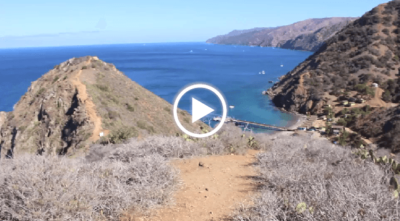
The chaparral environment of Catalina Island provides little rain for terrestrial plants. Most of the coastal environment is dominated by small shrub-like plants and scrub communities. These include scrub oaks and Coastal Sage Brush. Catalina Island is also home to several endemic species of plants, meaning they are found nowhere in the world but the island! St. Catherine’s Lace, Catalina Liveforever, Catalina Bedstraw, Catalina Figwort, Catalina Manzanita and Catalina Island Mountain-mahogany are among the endemic species on Catalina Island.
There are also many plants on Catalina Island with varied histories and uses. Coastal Sage Brush is also nicknamed Cowboy Cologne, for its pleasant smell. When men came to the island after spending time at sea, they would rub the small leaves on their bodies to mask their smells before heading into town. The native Tongva people of Catalina Island used the smell of Coastal Sage Brush to keep pests out of their homes. Lemonade Berry is a shrub with waxy leaves to prevent dessication, and bundles of small red berries. The Tongva people historically used these berries to create a tart lemonade drink. Wild Cucumber is an epiphytic vine, meaning it winds its tendrils on other plants. These plants have large, intricate seed pods that, when dried, were used by the Tongva people to create jewlery and accessories. Another very common plant found on Catalina Island is Prickly Pear Cactus. These cacti prove particularly problematic for inattentive hikers, because the possess two types of spines. Prickly Pear Cactus have long, splinter-like spines as well as numerous hair-like spines that break off into the skin, called glochids. Glochids possess barbs on their ends, and can be particularly problematic to remove. On a sweeter note, Prickly Pear Cactus bear a bright purple fruit called a tuna, which is edible. Just make sure to remove the spines!


